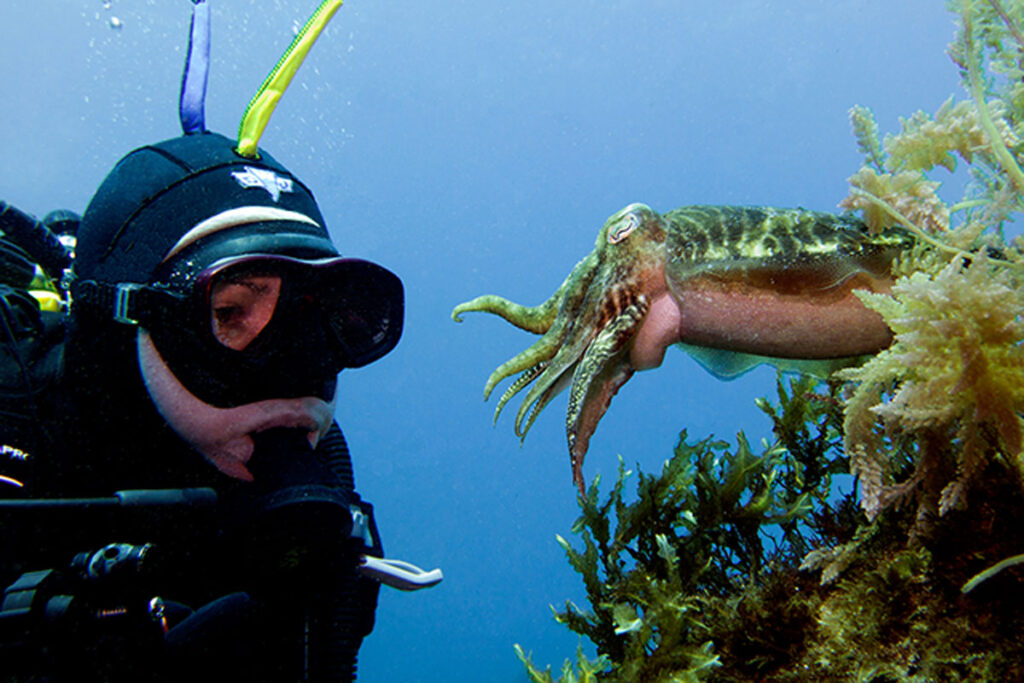1. Incredible powers of mimicry even though it is colour blind
The cuttlefish is a fascinating creature. This intelligent mollusc has almost incredible powers of mimicry. It can control the colour, patterning and texture of its skin to perfectly match its surroundings. And not just from above, the camouflage works from whichever angle it is observed. From birth, cuttlefish can display at least 13 type of body pattern, made up from over 30 different components.

The eyes of cuttlefish are highly sensitivity to light and they have far superior visual acuity than fish.
2. Females breed once then die
In addition to avoiding predators, pattern control is also used in courtship by male cuttlefish. This impresses females and warns off competitors. After mating the male will often defend the female while she lays clumps of eggs. These hatch in two to three months to reveal miniature cuttlefish. Females only breed once and die soon after laying.
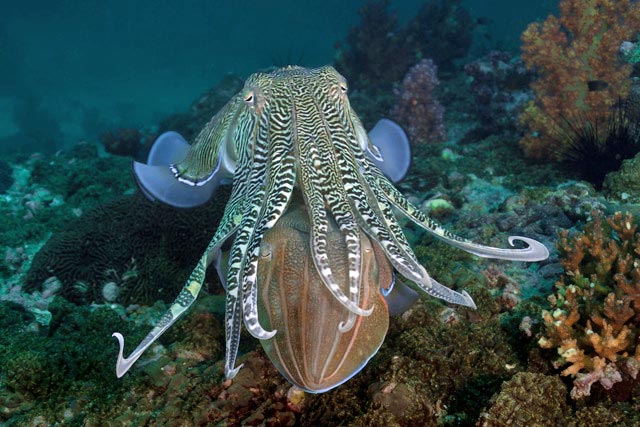
3. Powered by Jet Propulsion
With its flattened body skirted each side with fins, the cuttlefish moves with a pretty rippling motion. Like the closely related octopus, it can also escape by powerful jet propulsion whilst simultaneously ejecting a cloud of black ink to distract its foe. This ink is called sepia and was once used by artists.
4. Ten Arms
The cuttlefish’s mouth is surrounded by eight arms. It also has two long extendable tentacles and is thus classified as a decapod (10 feet).
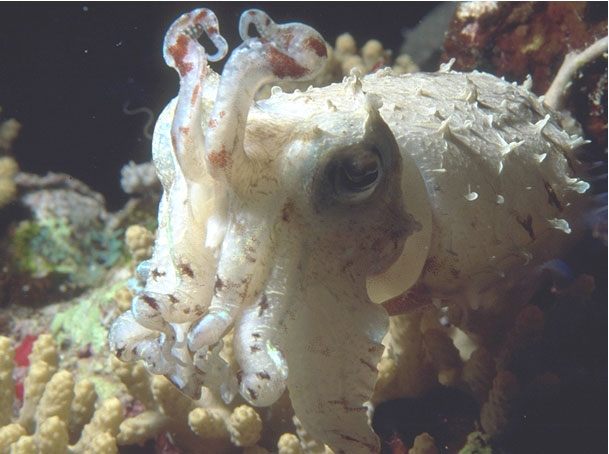
5. Three Hearts
The cuttlefish has three hearts. Two of them send blood to the gills, the other pumps blood around the body.
6. Carnivorous hunters
Carnivorous, cuttlefish catch fast-moving prey like crustaceans and fish with their long tentacles.
7. Found in seas all over the world, apart from the Americas
Species of cuttlefish live in Europe, the Mediterranean, East and South Asia, as well as all coasts of Africa and Australia. But not in the Americas.
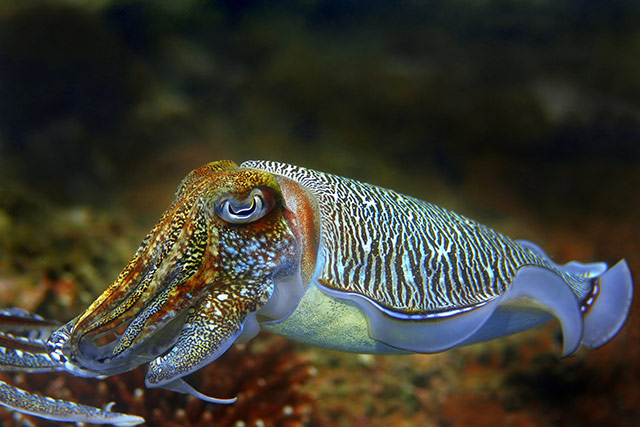 Image: DepositPhotosImage: DepositPhotos
Image: DepositPhotosImage: DepositPhotos8. Colour Change in Seconds
To change colour, the cuttlefish has a central sac (chromatophore) containing granules of pigment that is surrounded by a series of muscles. When the brain sends a signal to the cell, the contracting muscles make the central sacs expand, dispersing pigment and generating the optical effect. Their skin can change colour and pattern in just a second to match their environment.
Scientists have recently also discovered that cuttlefish possess luminescent protein structures that allow them to actively emit light, not just reflect and filter the ambient light from their environment. Additionally, they also discovered the presence of reflectin in the chromatophores, a high-refractive-index protein that, they suggest, allows the chromatophores, when highly stretched out, to more effectively absorb light than if they contained colour pigments alone.
9. Bone buoyancy control
The Cuttlefish bone is filled with small chambers. They fill or release air from these chambers to control their buoyancy.
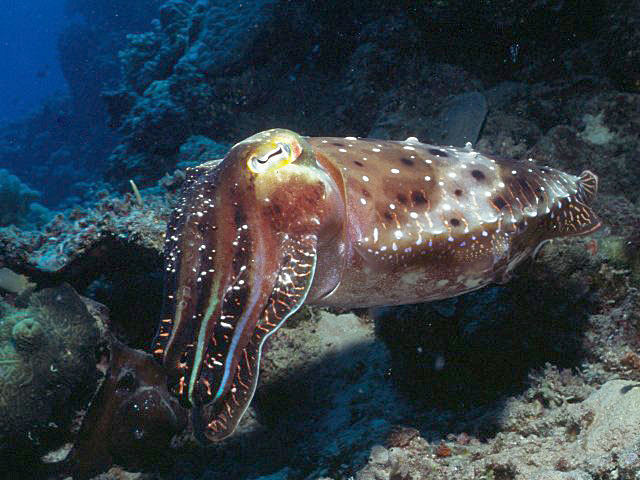
10. Cuttlefish are as Clever as some Vertebrates
A recent study showed that like some vertebrates, cuttlefish can exert self-control for over two minutes at a time. Cuttlefish can forgo immediate gratification and sustain a delay for a better but delayed reward of more preferred food. In the tests, all cuttlefish favoured live grass shrimps, pieces of raw king prawn came next and Asian shore crab was the least preferred prey. Cuttlefish that learnt the most quickly could also maintain a delay for longer. Chimpanzees, dogs and grey parrots have been shown to employ behavioural strategies such as looking away, closing their eyes or distracting themselves with other objects while waiting for a better reward. Interestingly, cuttlefish were observed turning their body away from the immediately available prey item, as if to distract themselves when they needed to delay immediate gratification.
Photo copyright Tim Nicholson, A. Nikolaev, Captain Victor Organ, DepositPhotos.
Further Reading
The Cuttlefish – a Source of Inspiration, SCUBA Travel
Alexandra K. Schnel et al Cuttlefish exert self-control in a delay of gratification task, The Royal Society, March 2021
“Chameleon of the sea” reveals its secrets, Harvard School of Engineering and Applied Sciences
Great British Marine Animals, by Paul Naylor
Leila F. Deravi, Andrew P. Magyar, et al The structure-function relationships of a natural nanoscale photonic device in cuttlefish chromatophores J R Soc Interface 2014 11: 20130942
NAOHIKO WATANUKI et al, Role of vision in behavior, visual field, and visual acuity of cuttlefish Sepia esculenta
Lydia M. Mäthger et al Color blindness and contrast perception in cuttlefish (Sepia officinalis) determined by a visual sensorimotor assay 2006
Image credits:
- Diver and cuttlefish: DepositPhotos
- cuttlefish-dp: DepositPhotos
